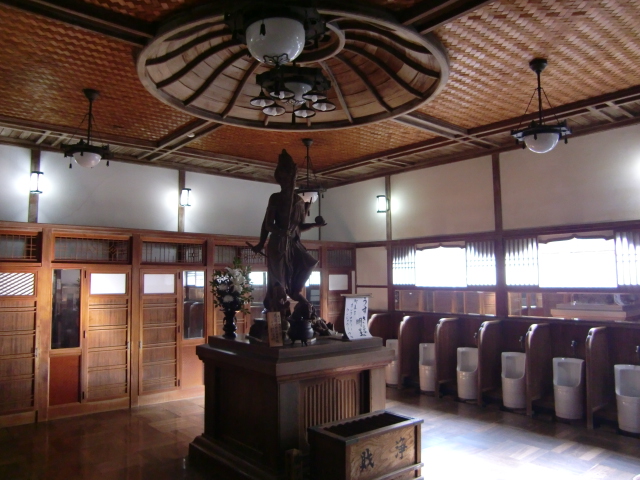
In preparation for our upcoming Treeleaf Annual 'AT HOME' Two Day 'ALL ONLINE' ROHATSU (Buddha's Enlightenment Day) RETREAT ... to be LIVE NETCAST on the weekend of Saturday & Sunday, December 7 and 8, 2012 (though starting Friday night in some time zones) ... DETAILS HERE ...
Going to the toilet is nature, is life, is Practice, is Zazen. All the Buddhas and Ancestors had to pee and poo, and so do you. But how we do our duty makes all the difference!
Master Dogen devoted an entire chapter of Shobogenzo to latrine procedures (two chapters, actually!) ... and during our Retreat we should see going to the toilet as a sacred ritual. First, drop all thought of "clean" and "dirty" ... flush such discriminatory ideas away! However, even as we drop all idea of "clean" and "dirty", we try to stay clean (we are always working on several levels in Zen) ... so, if wearing a Rakusu, remove it and hang it outside the toilet room before entering. Then Gassho 3x (or, if you wish, do full prostrations 3x) toward the door of the toilet room and recite a 'Gatha' such as the following (by Ven. Thich Naht Hanh):
Defiled or immaculate,
increasing or decreasing--
these concepts exist only in our mind.
The reality of interbeing is unsurpassed.
Of course, maintain silence in the bog. No reading material and, while one need not assume the Full Lotus Posture on the commode, one should do one's business with the sense of stillness-in-motion and non-attaining that is Zazen. Go with with Flow!
Truly, peeing is only action in that moment, a perfect act complete unto itself ... it is not you peeing, or even the whole universe peeing in that instant (although it is that too) ... for 'tis Just Peeing. On exiting, bow again 3x to the toilet door and recite a Gatha such as ...
Using the toilet I vow with all beings to eliminate defilement, removing greed, anger and ignorance.
Then be sure to wash your hands (there is something to recite for that as well) ... By the way, a similar ritual should be performed prior to entering the bath or shower. In that case, please recite a Gatha such as ...
Bathing the body,
may all living beings
be clean in body and mind,
pure and shining within and without.
We will have similar recitals of "Gatha" for use when brushing the teeth, washing the face and hands. They are printed in our "Chant Book" HERE (PDF), available for download for use during the Retreat.
For our upcoming Rohatsu Retreat, PLEASE PRINT OUT THE GATHAS IN OUR CHANT BOOK AND POST THEM AROUND YOUR BATHROOM!! IT IS ALL SACRED!
More here ...



 > Shingen!
> Shingen! Also, be sure to be sitting in the Lotus Posture the whole time.
Also, be sure to be sitting in the Lotus Posture the whole time. 



Comment